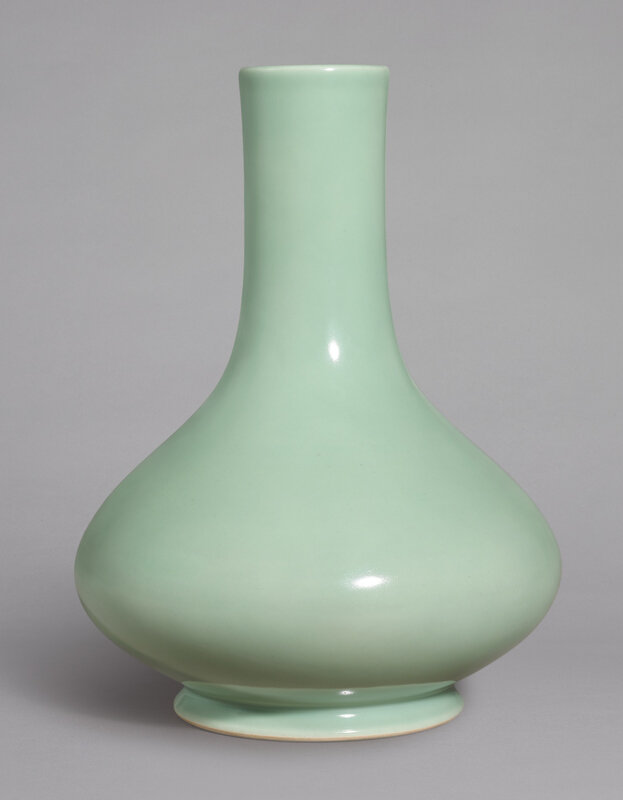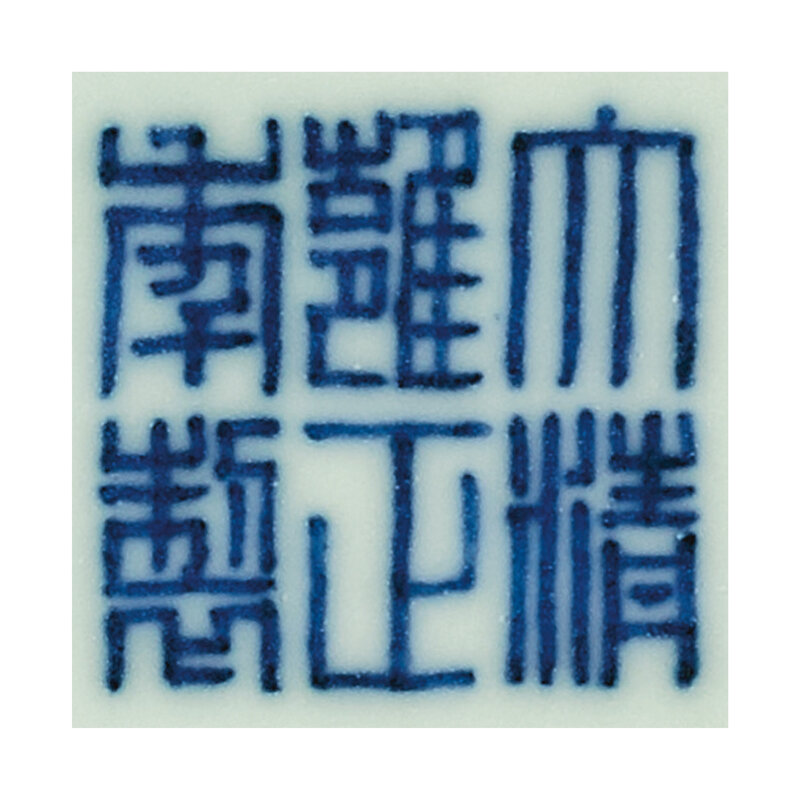sturdily potted with a compressed globular body surmounted by a tall tubular neck, all supported on a splayed foot, covered overall evenly save for the unglazed footring with an attractive bluish-green glaze, the base inscribed in underglaze blue with a six-character seal mark.
Note: This large and exquisitely glazed vase is an archetypal example of Yongzheng (r. 1723-1735) monochrome porcelain in its gracefulness and refinement of form. Under the Emperor’s keen eye, which was steeped in a thorough knowledge of the antiquities in the imperial collection, a profusion of new shapes and colour emerged which was only possible through the great technical advances that were achieved by his reign.
The subtle glaze has been created in imitation of Longquan celadon of the Song period (960-1279) and reflects the Qing emperors’ penchant for these early wares, which they not only collected but also commissioned the imperial kilns to recreate or imitate. The delicate, almost watery tone of celadon was a Kangxi innovation which was produced by lessening the amount of iron typically found in Song dynasty Longquan celadons. The glaze was further modified during the Yongzheng period.
The form itself is inspired by a Song prototype, such as the Longquan bottle vase in the Palace Museum, Beijing, illustrated in The Complete Collection of Treasures of the Palace Museum. Porcelain of the Song Dynasty (II), Hong Kong, 1996, pl. 99.
The form is more frequently found on monochrome vases produced during the Qianlong period, and it is rare to find a Yongzheng example. For a Qianlong example of this form, see the ‘guan’-type bottle vase from the collection of Stephen Junkunc III, sold in our New York rooms, 12th September 2018, lot 115.
Sotheby's. Qing Imperial Porcelain A Private Collection, Hong Kong, 08 Oct 2019, 10:00 AM

/https%3A%2F%2Fprofilepics.canalblog.com%2Fprofilepics%2F1%2F0%2F100183.jpg)
/https%3A%2F%2Fstorage.canalblog.com%2F03%2F02%2F119589%2F96711876_o.jpg)
/https%3A%2F%2Fstorage.canalblog.com%2F11%2F31%2F119589%2F94773502_o.jpg)
/https%3A%2F%2Fstorage.canalblog.com%2F20%2F83%2F119589%2F94772815_o.jpg)
/https%3A%2F%2Fstorage.canalblog.com%2F26%2F72%2F119589%2F75604929_o.jpg)
/https%3A%2F%2Fstorage.canalblog.com%2F59%2F60%2F119589%2F26458628_o.jpg)





/http%3A%2F%2Fstorage.canalblog.com%2F38%2F82%2F119589%2F129424760_o.jpg)
/http%3A%2F%2Fstorage.canalblog.com%2F40%2F22%2F119589%2F129148864_o.jpg)
/http%3A%2F%2Fstorage.canalblog.com%2F51%2F71%2F119589%2F127818288_o.jpg)
/http%3A%2F%2Fstorage.canalblog.com%2F85%2F06%2F119589%2F127801792_o.jpg)